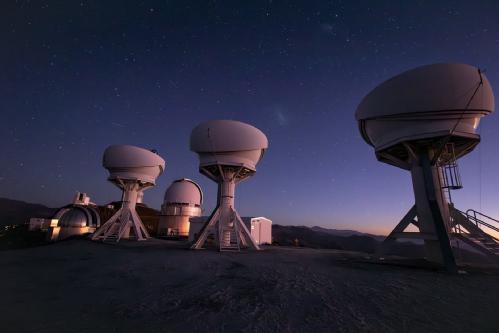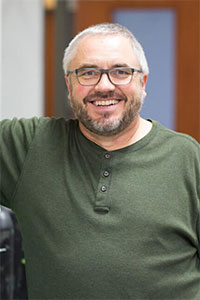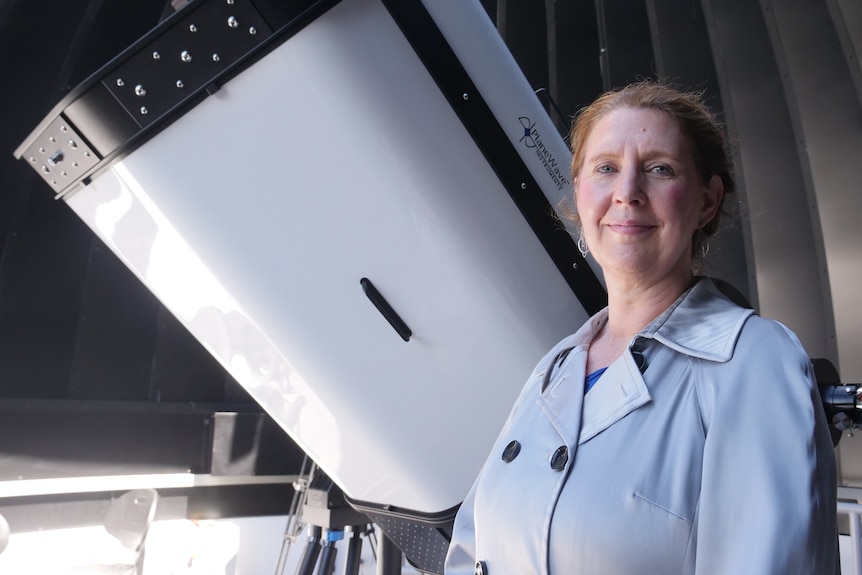-
In the Search for Life beyond Earth, NASA Dreams Big for a Future Space Telescope
The first steps to solve the millennia-old mystery of our true place in the universe happened, of all places, on a brisk and early Tuesday morning in the unremarkable conference room of a hotel in Washington, D.C. Here a team of legendary heroes assembled on Halloween—Gandalf and a Star Trek captain among them. Yet these…
-
Canadian astronaut assignments reflect growth of Canada’s ‘Space Force’
Canada’s next two astronauts in space will shine a light on the country’s fast-growing military space activities, says its top military space official. Canadian Space Agency (CSA) astronauts Jeremy Hansen and Josh Kutryk are both colonels and pilots with the Royal Canadian Air Force. This year they were assigned to the Artemis 2 moon mission…
-
A ‘world-first’ telescope allowing Australia to play a starring role in space communications
More than half a century after a tracking station in the ACT’s Namadgi National Park broadcast the grainy footage of Neil Armstrong’s first steps on the moon, a new telescope will allow Canberra to play another starring role in space communications. Key points: A new telescope at Mount Stromlo will give researchers thousands of times more…
-
Warwick Astronomer investigates binary star systems to further our understanding of the universe

An astronomer from the University of Warwick is to investigate an intriguing type of star system to help drive our understanding of the expanding universe. Dr Ingrid Pelisoli, has received a £1.2 million grant from the Royal Society to pursue her research, which will be analysing binary star systems. These are two stars sharing an…
-
What are radio galaxies?
A radio galaxy is a galaxy that dominates the sky over Earth in radiowaves. These bright radio wave emissions come from billowing lobes of gas that extend far beyond the visible structure of the galaxy, often for millions of light-years. These radio lobes usually occur in pairs and are created when the heart of a…
-
What are radio galaxies?
A radio galaxy is a galaxy that dominates the sky over Earth in radiowaves. These bright radio wave emissions come from billowing lobes of gas that extend far beyond the visible structure of the galaxy, often for millions of light-years. These radio lobes usually occur in pairs and are created when the heart of a…
-
Pounding out the dents: Westphall’s career solved problems, advanced discovery – Morgridge Institute for Research

Mike Westphall Whether he was replacing crash-damaged panels on a 1974 Buick as a teenager or devising novel instruments to stretch the capabilities of mass spectrometry to enable examination of some of life’s tiniest particles, Mike Westphall brought a body-shop ethic to work. And those same values of hard work, persistence, and problem-solving influenced Westphall’s…
-
Pounding out the dents: Westphall’s career solved problems, advanced discovery – Morgridge Institute for Research

Mike Westphall Whether he was replacing crash-damaged panels on a 1974 Buick as a teenager or devising novel instruments to stretch the capabilities of mass spectrometry to enable examination of some of life’s tiniest particles, Mike Westphall brought a body-shop ethic to work. And those same values of hard work, persistence, and problem-solving influenced Westphall’s…
-
Portable planetarium unveiled at University of Guelph

There is now a planetarium that can be taken to schools across Guelph and Wellington County. Royal City Science and the department of physics at the University of Guelph unveiled a portable planetarium on Monday. The planetarium is a seven-metre inflatable dome with a built-in projection system. Orbax Thomas, co-founder of Royal City Science, said…
-
Portable planetarium unveiled at University of Guelph

There is now a planetarium that can be taken to schools across Guelph and Wellington County. Royal City Science and the department of physics at the University of Guelph unveiled a portable planetarium on Monday. The planetarium is a seven-metre inflatable dome with a built-in projection system. Orbax Thomas, co-founder of Royal City Science, said…
